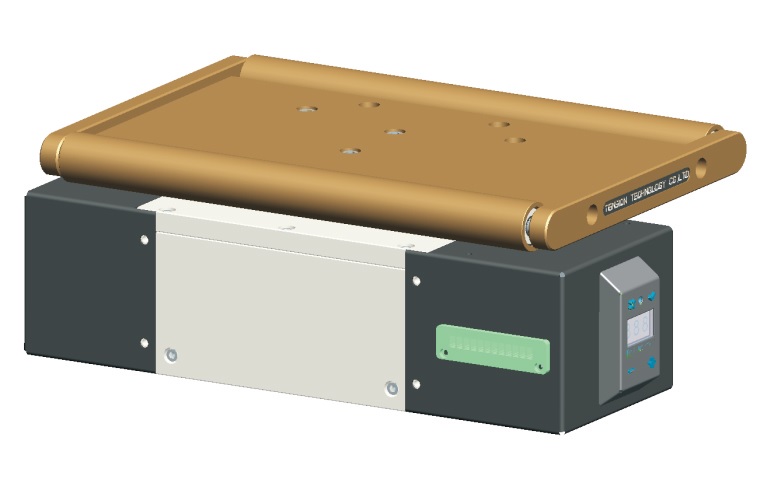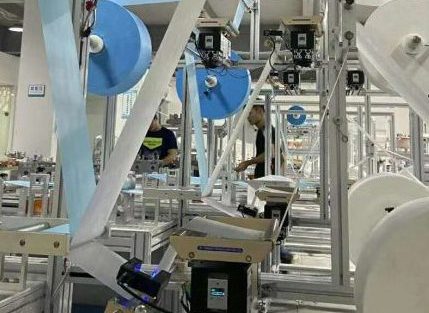Unlocking Efficiency Mastering Motor Loading Curve Tests for Optimal Performance 🚀🔋
In an era where industrial efficiency isn’t just a goal but a necessity, motor loading curve tests have emerged as the unsung heroes of operational excellence. Whether you’re managing a manufacturing plant, overseeing renewable energy systems, or simply aiming to reduce energy costs, understanding these tests can be the difference between stagnation and breakthrough. Let’s dive into why this technical marvel deserves your attention—and how it can transform your operations. WHAT ARE MOTOR LOADING CURVE TESTS? ————————————————— Imagine your motor as the heart of your machinery. Just like a cardiologist evaluates heart performance under stress, motor loading curve tests analyze how motors behave under varying loads. These tests map a motor’s efficiency, torque, power output, and energy consumption across different operational conditions. The result? A detailed “health report” that reveals hidden inefficiencies, predicts failures, and guides optimization strategies. WHY SHOULD YOU CARE? —————————— The global push for sustainability and cost-cutting has turned motor efficiency into a boardroom topic. Consider this: industrial motors account for nearly 45% of the world’s electricity consumption. A poorly optimized motor isn’t just a technical hiccup—it’s a financial leak. Loading curve tests help you: – Identify “energy vampires” draining your budget – Extend equipment lifespan by up to 30% – Reduce unplanned downtime by predicting wear patterns – Meet tightening regulatory standards effortlessly THE SCIENCE MADE SIMPLE 🧪⚙️ At its core, a loading curve test gradually increases the mechanical load on a motor while measuring critical parameters: 1. Voltage and current fluctuations 📉 2. Temperature rise patterns 🌡️ 3. Torque responsiveness 🔄 4. Harmonic distortions 🔊 Advanced setups even simulate real-world conditions—like sudden load surges in mining equipment or cyclical demands in HVAC systems. The data paints a vivid picture of how your motor performs when pushed to its limits… and where it’s quietly underperforming. INDUSTRY SPOTLIGHT: WHERE THESE TESTS SHINE 💡 Automotive Manufacturing 🚗 Tesla’s production lines use loading tests to ensure robotic arms maintain precision at peak speeds. A 1% efficiency gain here translates to thousands of extra units annually. Wind Energy 🌬️ Siemens Gamesa runs simulated storm scenarios on turbine motors. IEC 60072 revealed that a 15% overspeed tolerance could prevent 80% of gearbox failures—saving millions in maintenance. Data Centers 🖥️ 
 Google’s cooling system motors undergo bi-annual loading tests. The result? A 40% reduction in cooling-related energy costs since 2018. THE STEP-BY-STEP BREAKDOWN 🔍 Phase 1: Baseline Assessment Install sensors to capture “as-is” performance. This stage often exposes shocking truths—like motors operating at 50% load but consuming 90% rated power. Phase 2: Controlled Load Application Using electromagnetic brakes or programmable drives, technicians simulate everything from gentle ramps to earthquake-level shocks. Phase 3: Data Crunching 🖩 AI algorithms compare your motor’s curve against ideal benchmarks. The insights? Actionable. For example: “Rewinding the stator could boost partial-load efficiency by 22%.” Phase 4: Optimization Roadmap 📊 Receive a prioritized list of upgrades—from simple capacitor adjustments to full IoT integration for real-time load balancing. CASE STUDY: A TEXTILE MILL’S COMEBACK STORY 🧵 A Gujarat-based mill was facing 18% higher energy bills than competitors. Loading tests exposed that their 10-year-old motors were operating in the “efficiency valley”—a zone where energy use spikes but output plateaus. By: – Retrofitting 34 motors with variable frequency drives – Rescheduling high-load processes to off-peak hours – Installing smart sensors for load-based automation They achieved a 27% energy reduction and paid back the upgrade costs in 14 months. Now, they’re the region’s sustainability benchmark. FUTURE TRENDS: WHERE TECH MEETS TESTING 🌐 The next wave of loading curve innovation is already here: Digital Twins 🎮 Companies like GE create virtual motor replicas. Test 100 load scenarios in an hour without touching the physical machine. Blockchain Audits 🔗 Immutable test records help manufacturers prove compliance with global standards like ISO 50001. Quantum Computing 🧮 D-Wave’s experiments show quantum algorithms can optimize motor designs 200x faster than traditional methods. CHOOSING THE RIGHT TESTING PARTNER 🤝 Not all testing services are equal. Look for: – Accreditation (NABL, ISO 17025) – Experience with your motor type (e.g., servo vs. induction) – Data transparency—you own the results, period – Post-test support (engineers who explain curves in plain language) Beware of “cheap” packages that skip partial-load analysis—that’s often where the gold hides! YOUR ACTION PLAN 📅 1. Audit Priority Motors: Start with high-usage or aging units 2. Compare Pre- and Post-Test Data: Measure ROI in hard numbers 3. Train Teams: Equip staff to interpret load curve reports 4. Schedule Regular Retests: Efficiency isn’t a one-time fix THE BIGGER PICTURE: BEYOND SAVINGS 🌍 While the financial benefits are clear, motor loading tests contribute to larger goals: – Carbon Neutrality: Optimized motors could cut global CO2 by 1.4 gigatons annually – Circular Economy: Data-driven maintenance reduces scrap waste – Smart Grid Integration: Motors become responsive energy assets FINAL THOUGHTS: DON’T GUESS, TEST! 🏆 In the words of a plant manager who averted a $2M breakdown: “That loading curve looked like a toddler’s scribble at first. But once we decoded it, we found the blueprint for a leaner, meaner operation.” Your motors are talking. It’s time to listen.
Google’s cooling system motors undergo bi-annual loading tests. The result? A 40% reduction in cooling-related energy costs since 2018. THE STEP-BY-STEP BREAKDOWN 🔍 Phase 1: Baseline Assessment Install sensors to capture “as-is” performance. This stage often exposes shocking truths—like motors operating at 50% load but consuming 90% rated power. Phase 2: Controlled Load Application Using electromagnetic brakes or programmable drives, technicians simulate everything from gentle ramps to earthquake-level shocks. Phase 3: Data Crunching 🖩 AI algorithms compare your motor’s curve against ideal benchmarks. The insights? Actionable. For example: “Rewinding the stator could boost partial-load efficiency by 22%.” Phase 4: Optimization Roadmap 📊 Receive a prioritized list of upgrades—from simple capacitor adjustments to full IoT integration for real-time load balancing. CASE STUDY: A TEXTILE MILL’S COMEBACK STORY 🧵 A Gujarat-based mill was facing 18% higher energy bills than competitors. Loading tests exposed that their 10-year-old motors were operating in the “efficiency valley”—a zone where energy use spikes but output plateaus. By: – Retrofitting 34 motors with variable frequency drives – Rescheduling high-load processes to off-peak hours – Installing smart sensors for load-based automation They achieved a 27% energy reduction and paid back the upgrade costs in 14 months. Now, they’re the region’s sustainability benchmark. FUTURE TRENDS: WHERE TECH MEETS TESTING 🌐 The next wave of loading curve innovation is already here: Digital Twins 🎮 Companies like GE create virtual motor replicas. Test 100 load scenarios in an hour without touching the physical machine. Blockchain Audits 🔗 Immutable test records help manufacturers prove compliance with global standards like ISO 50001. Quantum Computing 🧮 D-Wave’s experiments show quantum algorithms can optimize motor designs 200x faster than traditional methods. CHOOSING THE RIGHT TESTING PARTNER 🤝 Not all testing services are equal. Look for: – Accreditation (NABL, ISO 17025) – Experience with your motor type (e.g., servo vs. induction) – Data transparency—you own the results, period – Post-test support (engineers who explain curves in plain language) Beware of “cheap” packages that skip partial-load analysis—that’s often where the gold hides! YOUR ACTION PLAN 📅 1. Audit Priority Motors: Start with high-usage or aging units 2. Compare Pre- and Post-Test Data: Measure ROI in hard numbers 3. Train Teams: Equip staff to interpret load curve reports 4. Schedule Regular Retests: Efficiency isn’t a one-time fix THE BIGGER PICTURE: BEYOND SAVINGS 🌍 While the financial benefits are clear, motor loading tests contribute to larger goals: – Carbon Neutrality: Optimized motors could cut global CO2 by 1.4 gigatons annually – Circular Economy: Data-driven maintenance reduces scrap waste – Smart Grid Integration: Motors become responsive energy assets FINAL THOUGHTS: DON’T GUESS, TEST! 🏆 In the words of a plant manager who averted a $2M breakdown: “That loading curve looked like a toddler’s scribble at first. But once we decoded it, we found the blueprint for a leaner, meaner operation.” Your motors are talking. It’s time to listen.